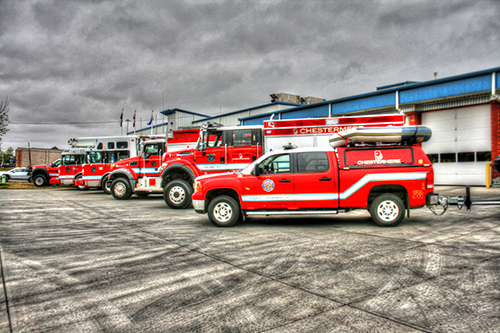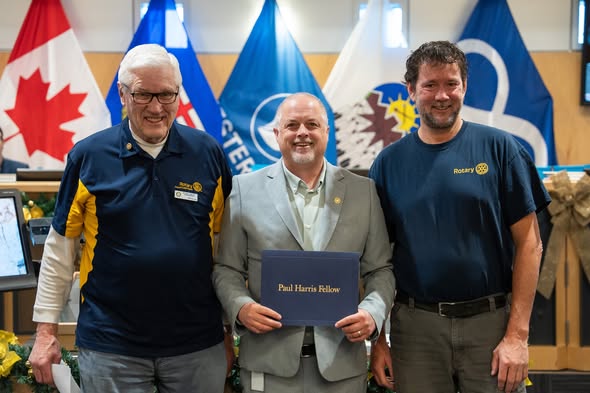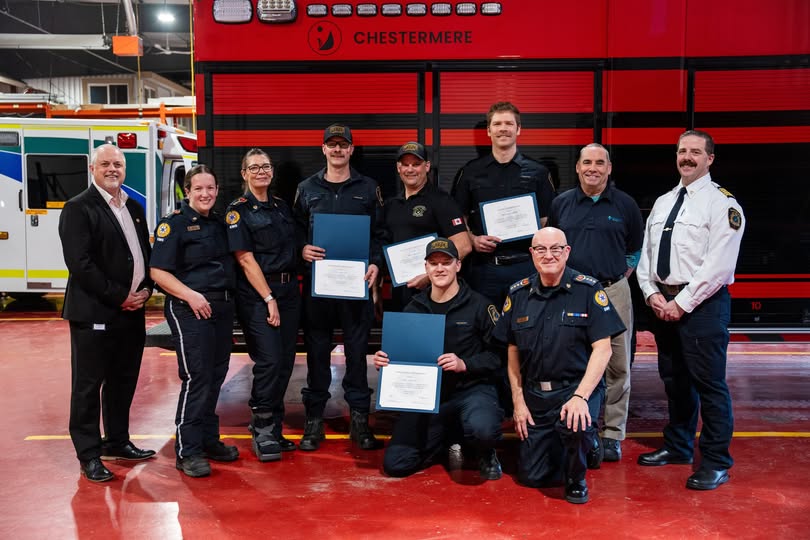When speaking of the sustainability of a city, town or community, there are many factors that could be addressed. Financial sustainability. Social sustainability. Economic sustainability. Regardless of which of these you’re referring to, the dictionary describes sustainability as: “the ability to be sustained, supported, upheld, or confirmed”, and over the past five months, the sustainability of Chestermere has been called into question.
As we all know, Chestermere has a very, for lack of a better word, ‘unique’ tax base. Commonly referred to as the ‘95/5’… meaning that we have 95% residential tax base which is very rare and makes a lot of people very nervous. Is a municipality that is pulling its revenue mostly from residential tax and provincial grants sustainable? Should Chestermere be deemed unsustainable, what is the fate of our community? Would Chestermere be better off amalgamating with the City of Calgary or Rocky View County?
I sat down with a few different individuals to get their opinions on the condition of Chestermere and tried to gain some perspective on where we’re headed as a city.
In December 2015, following the announcement of the CUI rate increase and then the announcement of an annexation request by the City of Chestermere of some Rocky View County land a few weeks later, Steve Grande began a blog that made a lot of Chestermere residents stop and think about what was happening in Chestermere. The blog, titled “Chestermere Watch – It’s time for some changes” addressed everything from taxes to land purchases to the sustainability of Chestermere. So I met with Steve to get his opinion on where Chestermere was headed.
“When I talk about sustainability, I talk about it as the sustainability of a community from a financial perspective. What happens is this – if our taxes go higher, it has a negative affect on the value of our homes and you can get yourself in a spot where your taxes get so high that it pushes the value of the homes down and then taxes have to go even higher because people are moving out – so you need to pull that gap closer together”, explained Grande who has called Chestermere home since 2004.
Grande gave the example of when people are looking for a place to live and they take a look at Chestermere and start comparing it to other communities like Calgary, people could look at the price of homes in each and then look at the taxes in each and decide that they would rather live in Calgary, where the taxes and home prices are less and they have significantly more services and just take the short drive out to Chestermere for use of the lake. “So when you have a situation like that, it’s not sustainable because you start to spread that gap and when you spread the gap that is when you’re sustainability breaks down”.
Grande also states that he has taken a very close look at some other Alberta municipalities and how their taxes line up. “These municipalities seemed to have figured out that they need industrial growth. The Province has made it brutally clear for the past four or five years and especially this year, that the tap is being turned off when it comes to funds going from the Province to the Municipalities and they are telling the Municipalities that ‘you need to be prepared for less money coming from the Province’.” In the budget just released by the City of Chestermere, in the 2016 Capital Projects Budget, 57% of their funds are coming from grants.
Municipalities typically have three sources of income – residential tax base, non-residential tax base and the other being other government grants, fees for service etc. When one of these starts to decrease, as is the portion coming from the Province, the pie doesn’t get smaller – the other sources are expected to make up for what is lacking from the other. So since Chestermere has less than a 5% non-residential tax base, the rest of that is weighing on residential taxes – which is why in a chart that Grande pulled from the Government of Alberta website that compared Chestermere property taxes against six other communities, Chestermere is the highest. “That is why our taxes are going up so fast is because we don’t have that non-residential tax base. The key to sustainability is a strong non-residential tax base, which Chestermere has about 4 1/2% “, adds Grande.
I also reached out to Patrick Bergen who was a former councilor with the City of Chestermere and is also the President of Smart Towns Inc., a data analytics company focused on governments.
Bergen says, “When one looks at the ability for a municipality to be sustainable the assumption is that it can continue to bring in enough revenue to cover the costs of running that municipality. The municipality sets the tax rates so it is highly unlikely a municipality would ever become unsustainable. It is only when a large amount of debt is incurred or there is a catastrophic loss of income that a municipality eventually becomes bankrupt”.
“Having said this, the usual discussion is whether a municipality can run with a level of taxation that residents find acceptable. The first thing to know is that new residents cost the municipality more money than they pay in residential tax. Mayor Nenshi flat out confirmed this in a quote last year. As residents are added the municipality has to continue to diversify its revenue through things like commercial property tax, grants and sales and user fees”, explained Bergen.
Bergen also mentioned that it is important to understand that municipalities make money from the property taxes collected on commercial property values regardless of the businesses level of profit. “It is the building owners that pay the taxes and not the businesses themselves”, says Bergen.
Bergen added, “It is really the success in growing the commercial tax base that will make any municipality maintain a reasonable tax base for its residents.
Chestermere could be sustainable on its own for sure. It can control how it is developed and managed better if it is on its own. The question is whether the residents feel that is important to them.”.
Steve Grande however, gave the examples of Calgary and Edmonton – both are at a 25% non-residential tax base and they have no problem getting commercial developers to want to build in their cities. If you were in Chestermere during the last municipal election, you’ll remember that Grande was quite adamant that Chestermere needed to bring in industrial business to increase the non-residential tax base, but Grande says he was met with quite a lot of disagreement on that from his fellow running mates.
I asked Grande why Chestermere is still where we are with a less than 5% non-residential tax base if other cities seem to have it figured out. “The reason we are here is because we have grown very fast. You look at other communities that have slowly grown over time and they’ve been able to slowly grow their non-residential tax base. The problem we have here is that retail always follows rooftops – that is nothing new and it’s old science. If you have 20,000 people, you’ll have a grocery store. If you have 5,000 people, you might have a small grocery store, nothing real big. As your population grows, so do your facilities. When you are right next door to the City of Calgary and most of your work force works in the City of Calgary, it has a gravitational pull away from Chestermere and there is nothing we can do about that”.
Grande went on to further explain that if Chestermere is at a 5% non-residential tax base, but that non-residential is coming from retailers only, Chestermere could grow to one million people and that non-residential tax base would remain at 5%. “As a community, we cannot put our focus on retail. Retail is smart – they’re following the rooftops – and that’s why the phone is ringing at city hall. It is the things that don’t rely on population – the industrial – that will get us to that 25%”.
There is never much debate on the beautifulness of Chestermere, but the question has been asked ‘is city and staff to hung up on the aesthetics of the type of businesses and buildings that want to come to Chestermere’? We’ve heard the phrase “no smokestacks’, but is that hurting our community?
Grande says, “Drive out to the Foothills Industrial park and show me one smoke stack? You can still have those industrial businesses without having smoke stacks. I say this, compare it to how you like your house to look – you want the main level to be looking nice, that’s where the company comes. Upstairs, it’s got to be nice but down in the basement you have a furnace room, and shelves built out of plywood and they look like crap, but I don’t care what they look like because they just have to be functional – and we have to do the same thing as a community”.
That then led me to a conversation with Mayor Patricia Matthews and Jean-Marc Lacasse, Manager of Economic Development with the City of Chestermere.
Mayor Matthews began with addressing the ‘95%/5%’ tax split. “There is a lot of discussion that goes into the 95/5 spit, from commercial to residential. What I think most people don’t understand is that the average community doesn’t aim for a 50/50 split or an 80/20 split. The 95/5 split is something that we’ve been achieving for years and have still continued to significantly grow. We’re less than a quarter century old as a community and the fact that we’ve gone from a small village setting to a city in that time frame, complete with the people that come with it, means that we have done a pretty good job of continuing to stimulate and bring businesses to Chestermere. Our ultimate goal, further down the road, is we do have a plan for this, just like we do for everything else, is to be able to increase that – not because as it makes us more sustainable from a financial perspective but because it gives breathing room to our residents and to the city as then we are able to put into place the things people want instead of just the things they need. As it sits now, the 95/5 split gives residents what they need and more “.
I asked Mayor Matthews about those communities like Calgary, Edmonton and Rocky View County that have already achieved a 25% non-residential tax base and asked why Chestermere was not there yet. “We have done initiatives in the last two years that have moved us to the for front of peoples minds. So if we want to put it simply, we actually have the capacity and we actually have the people right now to be able to do a better job of marketing ourselves and of selling the city to commercial and light industrial, we have places to put them – that was the purpose of the light industrial land component that we purchased – and we have the ability to have intelligent, well rounded, very well educated people, life Jean-Marc and David (Petrovich), to filter those leads and connect them with the right place. Keep in mind, we didn’t’ have anybody in economic development five years ago. So in the last five years, we’ve taken massive steps to attract more business here. The plan in the next five years, we’ll do that yet again. Calgary, Edmonton, Airdrie and Cochrane have all been around longer than 25 years – so if you’re’ going to project where Chestermere will be in the next one hundred years, we would expect we would be parallel to that. We have an economic development office that has outlined a very aggressive growth plan that will have us there in a shorter time frame”.
Jean-Marc Lacasse spoke to the economic plan for Chestermere stating, “When we look at the overall vision of what we want to do in economic development, sometimes we refer to it as ‘community economic development’, as we’re trying to have a place where people can work, live and play. The overall goal is to have more opportunities for people to work here, while they’re living and playing here. The one thing we noticed 2-3 years ago is that Chestermere is not known. We know we have a great community, we know it’s a great place to live, we know it’s a great place to play; we know it’s a great place to work if we have those opportunities. The people out there that can provide us those jobs, they don’t know Chestermere. We are working on building the general awareness of Chestermere”.
I asked Lacasse if the East Hills development is deterring businesses from building in Chestermere, specifically the new Waterbridge development, and his answer was a quick, “no”. “Brokers will bring up the East Hills development because they are very familiar with it. There will be those tenants that wont want to be there – they don’t want to be next to Wal-Mart or Costco – so guess where they’re looking? My approach when I go to meet with brokers is I have the conversations with the two competitors, separately, and they’ll both be talking about East Hills and I’ll tell them ‘you can go there, I wont stop you, but I’ll certainly get your competitor in Chestermere'”.
Lacasse went on to explain that as the city is working on building the awareness of Chestermere and drawing light industrial here, the biggest obstacle is that these things take time. “When you’re looking at this from a business and if they are looking to expand or move, it’s something that will be for a minimum of three years in the sales process and usually five years, sometimes ten years down the road”.
I asked Matthews and Lacasse if the city was too hung up on what Chestermere looks like by way of what businesses they do and do not allow coming to town. “There are some people that have lived in Chestermere for a long time, who tried to start businesses or bring businesses to town years ago, when we didn’t have streamline processes in place that we have now. And because since that point they have never tried to bring anything new to town, they haven’t’ had the experience of how fast and efficient we are at bringing businesses through town. Nor do they understand that we, on behalf of our residents, have an expectation that our community will be esthetically pleasing. That doesn’t mean it’s difficult to get through, it just means that the place has to look nice and not like a cobbled bunch of junk put together because it’s Chestermere and the expectation is people should be able to come home to a place they are proud of and pleased to be in. So we would invite anyone who is in under the misconception that it’s difficult to do business in Chestermere, to maybe try it again because we obviously haven’t seen you for a few years”, says Matthews. “There really is no space for cheap, pop-up, poorly constructed business here and if those are the businesses that have tried and failed to come to town, there is an obvious reason why – it means that we represent our constituents and our residents and our other businesses”, added Matthews.
“When people throw around the word sustainability, they don’t always think about everything that entails and saying that something is unsustainable without understanding the whole picture does an injustice to everything that’s being done for this community – now and in the future. Every decision we have is tied back to a strategic plan. So you plan out the budget for your own household and where you’re going to put your money in the future. You pay your bills. You figure out where your kids are going to play and you find a nice house to live in. We do the same thing here. We plan where we’re going to be five, ten, twenty years, we make a plan on how we’re going to do that and a budget in place to make is easier on everyone to do it. The commercial light industrial component makes it easier it doesn’t make it necessary”, says Matthews.
“Saying 95/5 does not mean we can’t pay the bills. That is not the case at all. 95/5 is one piece of the picture. It means that we still are able to pay our bills, we have our communities needs met and when we want to do bigger things, when we want to look for a rec center, for instance, then we look to do we have that commercial component that can contribute to that so it’s not tax payers that have to do it. We are always looking at that,” adds Matthews.
“There are those people that say that city hall will only paint a rosy picture of where we are. The bottom line is that the Province also plays a part in whether we are sustainable or not and reviews whether we are sustainable or not. There was a study done two years ago on if there were places in Alberta that were unsustainable and if they should merge and there were a few counties and towns that did exactly that. We were never in the conversation for it. “, says Matthews.
I asked Mayor Matthews if Chestermere was to stay as it is right now and no industrial businesses come to town and the 95/5 remained, is there a fear that the Chestermere would have to, either by it’s own choice or by the Province stepping in, be forced to amalgamate with Calgary. “The Province wouldn’t require us to amalgamate into Calgary if we continue with a 95/5 residential to commercial tax base. Not in the least. If the doors close tomorrow and a giant wall went up around Chestermere, we’ve been working for the last decade to fifteen years at being self-sustaining. Which means that other than sewer and water, which we get out of Calgary, could we put a giant wall around the city and still exist? You bet. Yep, absolutely. We have access to a health center here, doesn’t have a hospital but we can go to Strathmore – there’s lots of communities that don’t have hospitals. But we have our basic health care needs met here and lab testing that can be done. We’ve got a strong enough entrepreneurial component, we’ve got a strong enough commercial component – we’ve heard for years people want more places to eat, they certainly have them. There are lots of shopping opportunities here. No they would not make us become part of Calgary”, explained Matthews.
However, on the topic of amalgamation, Steve Grande expressed his opinion saying, “I believe it is too late to turn this around. If’ we’re amalgamated into Calgary, we’re still Chestermere. If we were to be amalgamated into Calgary, our taxes would drop and our services would go up. If we were to be amalgamated into Rocky View County, our taxes would go down but our services wouldn’t necessarily go up, but we would have more flexibility to do what we want to do as the recreation oasis of Alberta. If we were amalgamated into Rocky View County, we would be like a Sherwood Park or Fort McMurray – a specialized municipality, recognized in certain ways by the Province, recognized in certain ways by the Calgary Regional Partnership. For people to say that if we joined the City of Calgary, we wouldn’t have proper representation, I say, wow… those (Calgary) city counselors sure do represent their constituents”.
“The vast majority of our residents, time and time again, say that they want Chestermere to remain autonomous. We are a fantastic place and they don’t want to be Calgary and those that do, move there. But people moved out to Chestermere and are still moving out to Chestermere in droves for very good reason”, added Matthews.
“There are plans in place, and available if anyone wants to see them or talk about them – come on in and we’ll tell you all about them. People have told us what they want our community to be – now and into the future and we’ve put in strategic plans that say we will make sure that we put into place opportunities to attract more businesses and that we have people to answer the phones when they ring – and their phones ring a lot – it takes a while for that cycle to go through, it’s not like going in and picking out a new pair of jeans – it doesn’t happen over night. We look at all aspects of sustainability. Our ecological and wetland sustainability. We look at financial sustainability and how do we make sure we keep our taxes low. We look at economic sustainability and how do we make sure we market our community properly. We look at the sustainability of the health of our community. When you mention one piece of the puzzle, it’s unfairly throwing out a picture that isn’t complete. There is a plan behind all of this, rooted from the needs and wants from our residents. If you have an opinion, we need to hear it and it’s why we have a very robust, well-educated and experienced communications team that works on this. It’s why we are seeking additional communications expertise, to be able to collect that information because despite all the ways we have been communicating, we’ve heard from some residents that there should be more. Tell us how we’re missing the mark – we always want to hear from you”.
My final question to Steve Grande, going back to his statement of it being too late for Chestermere to correct its path and be sustainable, was what he thinks the solution is for Chestermere. “I think it’s going to be difficult for this community to turn this around. It’s hard to counter the static. There are those people that if you say the sky is blue, they will tell you the sky is orange. There is all that noise out there which is going to make it even more difficult for us as a community and it’s at a point like this when you need some really good, strong leadership to say ‘ok folks, it’s ok, this is the path that we need to go down to move forward. To be able to give the message that if we are amalgamated into Calgary, we will still be Chestermere”.







